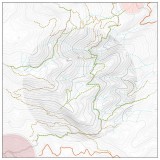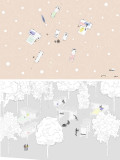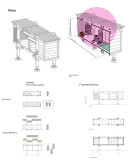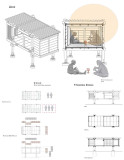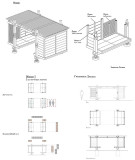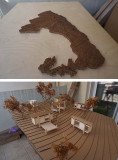The present thesis concerns the development of a methodology for finding the -optimal- placement of emergency shelters in semi-mountainous and mountainous areas of Greece. The methodology for the construction of the shelter considers its relationship with the existing network of trails and existing shelters. The application of the methodology is developed through the case of Mount Pelion.
The paper is divided into two broader parts, consisting of subparts. The first part concerns the development of a general methodology for the spatial location of an emergency shelter in Pelion Mountain, while the second part concerns its design.
More specifically, in the first part, the hiking network of Pelion is mapped, the existing shelters are studied and, through them, going from the specific to the general, a methodology is designed to determine where an emergency shelter could best be located, based on hiking needs and spatial analysis. It concludes with an analysis of possible locations, arriving at four main ones: Itamos, Tiseo, Krytharies and Chionotrypa.
In the second part, the researcher's personal experiences throughout Greece (2014-2024) are selectively recorded, analysing empirically the basic functions of the shelters visited and the practices that accompany the visit or the overnight stay in them. This recording and analysis formed the basis for possible uses to be included in the new shelter beyond the conventional ones. Following the analysis of the possible sites in the first part, the following is the selection of one -Itamos- from the studied areas, considering their qualitative and quantitative characteristics. The thesis concludes with the architectural design of the emergency shelter, considering its placement in the -calcareous and beech- planted landscape of Itamos. Based on the modularity of a unit and the construction principle for the possibility of repeatability and easy disassembly and assembly, three basic structures were designed: the Single, the Double and the Common. These structures can be integrated/adapted to any landscape and can be multiplied or reduced according to the needs of the upcoming site.
